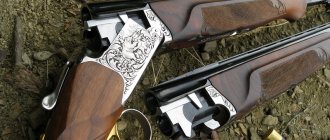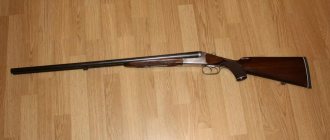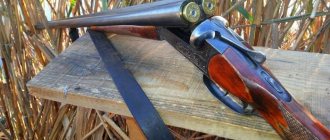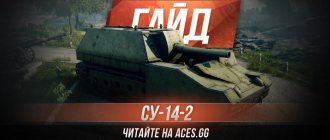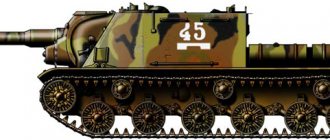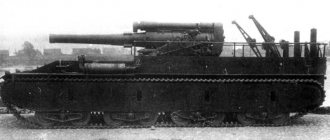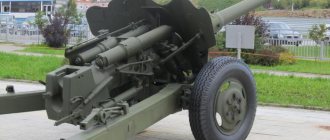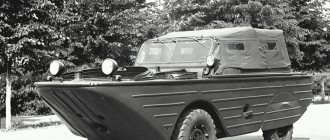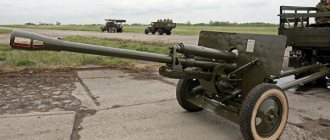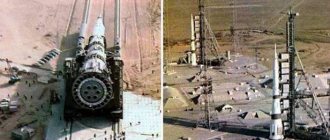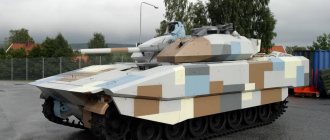The IZHB-47 hunting rifle was developed in 1947 on the basis of the IZHB-36 and was produced for only a few years. The gun was made mainly in 16 gauge, 12 and 20 were quite rare. The length of the gun barrels is 700 mm and the weight is 1.69 kg. Drilling - pay-chok. The weight of the assembled gun varies from 3 to 3.2 kg. The total length of the gun is 1130 mm. The locks on IZHB-47 are false-padded. Accuracy for pay is 47%, for choke - 57%.
The IZHB-47 double-barreled shotgun is rare, both before and now. But it was she who with dignity completed the series of mass-produced Izhevsk horizontal guns of the second quarter of the 20th century with locks on the side plates, which were very necessary for hunters.
Main features of 16 gauge
During the Soviet years, the 16th gauge competed with the 12th for a long time and was considered in many ways even better.
However, over time, weapons companies realized that guns with a barrel diameter of 16.8 millimeters were not very popular, so their production began to decline. One of the brightest impetuses for this was the story of the IZH-57, a 16-caliber modification of the legendary double-barreled shotgun IZH-54. During its entire existence, no more than 20 thousand copies of this model were sold. However, one should not think that the time of the 16-gauge has passed and hunters do not choose such a weapon as a faithful ally. To this day, in gun stores you can find interesting models that perform well on the hunt. The main difference with the 12 gauge is that the 16 gauge is more highly specialized. Such a gun is used mainly for hunting waterfowl, as well as shooting fur-bearing animals.
16 gauge is typically used for small game hunting
As for the main features, they look something like this:
- Weapon weight. Compared to 12-gauge double-barreled shotguns, models with a diameter of 16.8 millimeters are significantly lighter because the barrel is smaller. It is convenient to move with such a weapon, and the hunter gains additional maneuverability when shooting.
- Recoil. One of the undeniable advantages of a 16-gauge shotgun is that it has much better ergonomics due to lower shot power and a relatively small amount of gunpowder (up to 3 grams) and shot (up to 34 grams).
- Assortment of guns. Despite the fact that you can still find samples of 16-caliber smoothbore weapons in gun stores, manufacturing companies are extremely reluctant to produce new models due to their low popularity.
- Availability of ammunition. Many hunters complain that they have to wait weeks for 16-gauge ammunition to arrive at their local gun store. And considering that some guns only shoot branded ammunition, the problem only gets worse.
- Variety of cartridges. Despite the fact that the 16-gauge can be loaded with a bullet or buckshot, in practice such ammunition is used extremely rarely. After all, the main purpose of this gun is to shoot shot loads from 23 to 34 grams.
However, supporters of the 16-gauge are right that such a weapon is much better suited for hunting game birds. The accuracy of the battle remains at 55% (chok) and 45% (poluchok) when shooting from a distance of up to 50 meters. Well, at long distances it is the large spread of shot that allows you to shoot game birds. And on a fur-bearing animal there will not be as many wounds as from a shot from a 12-gauge. The most important thing is to choose the appropriate shot number and the optimal amount of gunpowder.
A 16 gauge shotgun is effective at short range
Pros and cons of 16 gauge
Let’s highlight the main advantages and disadvantages of 16-gauge in a table to make it easier to form an objective opinion:
| Advantages | Flaws |
| Low recoil | Low shot power |
| Small weight of weapons | Poor combat accuracy |
| Poor range of guns | |
| Monotony of cartridges | |
| Ammunition shortage |
As you can see, the situation is completely opposite. However, does this mean that the 16 gauge is much worse suited for hunting? To some extent, yes. But if hunting with a 16-gauge shotgun is carried out on the right game, then some of the shortcomings (lack of power and accuracy) simply lose their relevance. The only problem that remains is with choosing a gun and ammunition, which is partially solved by the ability to order everything you need via the Internet. If you like to buy everything in a store, then there’s nothing you can do about it - they have a really small assortment.
One last thing: is a 16-gauge shotgun suitable for the beginning shooter? Yes, and much better than the 12 gauge, but provided that the hunter does not switch to a larger option in the future. Otherwise, it will take quite a long time to get used to the recoil that appears, and you will need to acquire all shooting skills again. But if a hunter does not strive to become a professional, but only occasionally goes out to the river for ducks, then learning to shoot accurately at the target will be much faster. So when choosing a weapon, you should also look to the future.
Thus, there is no single piece of advice on which gun is best for hunting. Yes, the 12 gauge is versatile and suitable for shooting most types of game. But what if the hunter plans to shoot hazel grouse and partridge? So all these disputes are pointless, because the tastes and preferences of different people differ from each other, not to mention the fact that each gun has its own purpose.
Design features of IZHB-47
IZHB-47 is a double-barreled hammerless shotgun with horizontal barrels. It consists of 4 units: a block of barrels, a box where the trigger, safety and locking mechanisms are located, as well as forends and stocks.
The trunks are detachable and located in a horizontal plane. The barrels are locked using two under-barrel hooks and a cross bolt. Impact mechanisms are mounted on key boards. False locks. Return triggers. The strikers are also returnable.
In design, the locks of the IZHB-47 gun correspond to the locks of the IZHB-46 gun and have only the following differences:
- key boards are thickened and shortened;
- mainsprings are strengthened to 17-21 kg;
- trigger swing increased to 11-12 mm;
- There are indicators of cocked hammers.
The hammers are cocked by the cockers when the gun is opened. Smooth trigger release is possible. The gun has an automatic safety lock that locks the triggers. The safety button is located on the shank of the block. Forend with push-button latch. The stock is straight, semi-pistol or pistol shaped. Unlike the IZHB-46 gun, in this model the upper strip of the barrels is solid without joints, the frame boards are shortened and thickened, there are cocked indicators, the shape of the triggers and safety guard is changed, and the neck of the stock is lengthened.
The barrels for IZHB-47 were partially manufactured at the Tula Arms Plant. The differences were very minor. The weight of the Tula barrel was 1.85 kg, and the length was 752 mm.
The design of the horizontal IZHB-47 has been improved in comparison with previous similar Izhevsk double-barreled shotguns, for example, to eliminate misfires, the amplitude of movement of the trigger when hitting the firing pin has been increased, and the mainsprings have also been strengthened.
The locking plate, thickened and somewhat shortened in the rear part, is fixed at the front cape in the side groove of the block under the cushions and secured to the block with a screw. The locking plates are secured together with a transverse screw at the rear. The cocking pin indicators are located outside on the side plates and are protected by rounded bosses.
The IZHB-47 gun was equipped with barrel blocks with a length of predominantly 700 mm, made of Izhevsk steel grade 50A. Thus, the 12-gauge sample weighed approximately 3.27 kg. Barrels of a larger caliber led to the fact that the center of gravity of the IZHB-47 12-gauge shotgun assembly shifted further from the block shield.
The balance of the gun did not change for the better, but hunters put up with it, since there were not enough serial domestic weapons at that time. The 12-gauge barrels had a bore diameter of 18.2 mm, quite narrow, but within the acceptable range for this caliber. The choke constrictions of the right barrel and the choke of the left made it possible to obtain the usual shotgun performance for a gun of an affordable category: 47 and 57 percent, respectively.
Approximately the same combat performance was given by the IZHB-47 and 16-caliber guns, which were tested with cartridges loaded with shot shell No. 5. It is important that the “Passport” of this model indicated the number of pellets in the projectile - 200 pieces, which allows for a more accurate assessment of the actual performance shot fight. The barrels of such a gun with choke-choke choke gave an accuracy of 46 and 60 percent, respectively 92 and 120 pellets. As a result, the model turned out to have wide possibilities for hunting.
The IZHB-47 horizontal gun was produced until 1950; only the year of manufacture was marked on the barrel block cushion, unlike previous models, on which the manufacture date was stamped in more detail, including the year and month of manufacture.
On the pad of the barrel block the serial number, caliber were indicated in numbers in a diamond, the diameter and length of the chambers was 70.1 mm in the form of a shot, and the length of the chambers was accurate to 0.1 mm. The diameters of the bore and choke in mm were also marked in the form of shot, for example with the stamp “16.8/16.0” on a 16-gauge shotgun.
IZHB-47 double-barreled shotguns were tested under rather harsh conditions, for which purpose the cartridges were loaded with enhanced charges of smoke or smokeless powder, for example, for a 12-gauge shotgun with a charge of smokeless powder weighing 3.2 g, for a 16-gauge gun weighing 3.0 g and for 20 gauge weighing 2.8 g.
At the same time, the mass of the shot shell almost corresponded to the nominal value, for example, for the 12-gauge 34 g, for the 16-gauge 32 g and for the 20-gauge 25 g. Obviously, the test cartridges developed high pressure.
After this, the corresponding mark was placed in the form of the letter “U” in a trapezoidal frame, and tests with smokeless powder were marked with the “Nitro” mark on the barrel cushions. The permissible operating pressure of 700 kg/cm2 was indicated in the “Passport” of the gun.
The IZHB-47 double-barreled shotgun is decorated quite modestly in the style of Izhevsk mass models. The contours of the breech of the barrels, the block and the locking plates are decorated with engraved stylized ornaments. And the locking plates are decorated with a simple pattern.
The stock has a straight neck, pistol or semi-pistol shape; there is also a protrusion under the cheek on a number of copies. Walnut wood is usually a modest wide-grained variety. Fine checkering on the neck and fore-end clearly reveals the texture of the nut.
Types of smoothbore guns
Old Soviet over-and-under IZH-59 satellite.
16-gauge smoothbore shotguns are divided into single-barrel and double-barrel. Double-barreled ones, in turn, are divided into the following categories:
- horizontal, that is, the gun barrels are soldered next to each other in a horizontal plane;
- vertical, that is, the gun barrels are located vertically.
It will be more convenient for a novice hunter to catch a target with a single-barreled 16-gauge weapon. Firstly, it does not block the arrow’s view forward, and secondly, it is almost 2 times lighter than a double-barreled one. In case of a miss, a double-barreled weapon allows you to shoot a second time without reloading. The placement of barrels on this type of weapon differs only in the specifics of aiming and holding the shot.
Horizontally positioned barrels make the gun widest, and this impairs visibility. But it has good windage. In a 16-gauge over-and-under, the arrangement of the barrels allows you to take aim faster after the first shot. To understand which barrel placement is most comfortable for you, you need to practice shooting more.
Advantages
Classic Soviet double-barreled shotgun IZH-58, half a century in the service of hunters
To summarize, we should talk about the advantages of 16 gauge, putting them in a single list. This will help you understand why this caliber is so popular among beginners and professional hunters:
- optimal power - not as high as that of 12 gauge, but allowing you to hunt even small predators;
- combat sharpness - ease of use helps you fall in love with guns of a given caliber, and even with a further increase in the arsenal, the shooter, as a rule, always has at least one “sixteenth” carbine;
- optimal technical characteristics - the balance of weapon size, weight, recoil, and reload speed is chosen surprisingly accurately;
- practicality - affects the availability of ammunition on the domestic market, ease of maintenance of the guns themselves;
- the use of modern mechanisms - this has expanded the possibilities for choosing smooth-bore weapons, taking into account the shooter’s preferences;
- good accuracy at short/medium distances - this plays into the hands of commercial hunters.
Due to its light weight, 16 gauge is well suited for hunting on foot. 16 gauge shotguns are excellent for learning the first skills of shooting smoothbore hunting weapons. Low recoil and moderate weight make carbines of this type the optimal choice for teenagers and women.
IZH-12 in sports
It is worth noting that in those days, shooting, or more precisely, skeet sport, was quite popular in the USSR. Sports societies trained good shooters. The sections, as a rule, used inexpensive guns, one of which was IZH-12. Caliber, characteristics, price, reliability are the main arguments when choosing a weapon for the section. Beginner shooters with this gun received 2nd and 3rd categories without any problems. At the trench stand, especially talented shooters with the IZH-12 rifle even managed to get the first category. However, almost no one succeeded in this in the round. More expensive guns were not available in all circles and were given only to the most promising athletes.
16 gauge single barrel shotguns
MC-21
Soviet 45-mm anti-tank gun m-42 1942
This model is one of the first semi-automatic shotguns manufactured in the Soviet Union. In addition, this is the only domestic self-loading gun of its kind, which operates on the principle of a moving barrel. This is an ideal option for both novice hunters and commercial hunting. The minimum accuracy of combat in this case is approximately sixty percent at a distance of thirty meters. MTs-21 is a fairly reliable model and is often used for hunting in regions with cold climates. The gun is easy to disassemble and does not require special maintenance or frequent lubrication. The barrel length is 78 centimeters, and the rifle weighs a little more than three kilograms.
IZH-18
This single-barreled shotgun can easily be called one of the best of its kind. It is distinguished by the internal arrangement of the trigger, a narrow barrel with a front sight without a sighting bar. It is also quite easy to disassemble into three parts. In addition, this model is easy to use. The safety here is a push-button one; if the gun is not completely closed, an accidental shot will not occur. When struck or hit, the trigger automatically switches to safety. The gun has a barrel length of 7300 mm and weighs just over two and a half kilograms.
When deciding to choose a 16-gauge gun for hunting, you need to pay attention to the technical characteristics, as well as your own feelings while shooting. It’s not for nothing that many hunters fell in love with the sixteenth gauge
Good accuracy, excellent power and great stopping power - all this makes 16-gauge shotguns the optimal option for hunting both small game and large animals.
Production and success
In addition to the IZH-12 12 gauge model, there was also a 16 gauge IZH-12 version. The characteristics of this modification are not fundamentally different from the main character of our review. The main difference comes from the name - increased caliber. The IZH-12 shotgun was mass-produced from 1963 to 1974. During this time, the plant produced 312 thousand guns. 129 thousand of them left the Soviet Union. Not only Soviet, but also foreign hunters highly appreciated the IZH-12 (12 gauge) gun. The characteristics of the gun allowed it to achieve a high hit rate. The plant guaranteed that when shooting at a 75-centimeter target with shot number 5 from a distance of 35 meters, the accuracy of the fire would be 52% from the lower barrel and 56% from the upper barrel. The manufacturer also guaranteed that the product would “live” for at least 10 thousand shots.
Advantages of 20 gauge
Let's start the story with a short, useful overview of the advantages of 20-gauge hunting rifles. “Twenties” are in demand among:
- huntsmen;
- watchmen;
- experienced hunters with well-developed shooting skills;
- people who are concerned about the issue of self-defense.
20-gauge weapons are used primarily by experienced hunters
Light weight
The key advantage of the G20. Experienced shooters appreciate guns because after a tiring trek of 10–15 km, the guns remain easy to handle and moderately light. This weapon will be indispensable during hunting.
The manufacturer must be taken into account here. Domestic 20-caliber double-barreled shotguns cannot boast of light weight. Their weight reaches 3.4 kg (for magnum cartridges), as a result of which the “twenty” loses all its charm: with the same weight, a 12-gauge gun has higher performance.
The ideal weight of a “twenty” is 2.4 kg (exactly 100 times more than the shot charge). This indicator corresponds to foreign products that:
- easy to use;
- practical;
- durable;
- characterized by excellent sharpness.
20 gauge hunting rifles are lightweight and easy to use
Light ammunition weight
This is another plus. For these guns, plastic-rubber cartridges loaded with shot are produced. This allows you to:
- take increased ammunition for hunting;
- reduce the weight of equipment using a standard set of shot.
Loaded 20-Gauge Ammo Ammo with brass cases is hard to find commercially. If they exist, then the range is very limited. But if you are preparing for a long journey, then the “twenty” will please you with its moderate weight of equipment.
Barrel pressure
These guns are available with a smooth barrel. When fired, the pressure of the powder gases reaches 950–1000 bar. This affects the accuracy of the shot and creates the feeling of a sharp, biting shot.
Experienced hunters and gun experts often have differing opinions. The latter claim that the shot of the “twenty” scatters strongly already at 30–35 meters. However, the owners of such guns say that the accuracy at 60 meters fits into a newspaper spread - this is an excellent indicator. Here you need to take into account the features of each individual gun model.
20 gauge shot accuracy
Other advantages of the “twenties”
Other advantages include:
- Short barrel. Due to their compactness, such guns are ideal for hunting in thickets and thickets. They make the shooter maneuverable, do not limit his movement, and, combined with their low weight, allow him to quickly raise the barrel for aiming.
- Suitable for decoy hunting. Here, small caliber does not matter much. If you are luring a duck, then five successfully hit pellets will be enough. The loot won't go away.
- Comfortable return. This factor is especially important for owners of double-barreled guns (with horizontal and vertical barrels). This way you can quickly make a second shot without losing sight.
20 gauge shotguns have low recoil
Preliminary result
Due to their lightness, maneuverability and low recoil, 20-gauge shotguns are excellent for clay pigeon shooting and for getting to know guns in general. They are economical in terms of gunpowder and shot.
Minimal damage to the trophy when using a bullet
As a conclusion
Affordable hunting weapons, albeit without outstanding characteristics, greatly helped to establish post-war life. This was especially true in rural and suburban areas, where the hunter’s catch became a significant help in the economy.
A few years later, when the domestic industry reached its previous level, the first post-war models were replaced by new developments. Production of IZH-47B was discontinued.
By the seventies, Izhevsk models from the forties were considered just old guns, and after half a century they became collectible.
Currently, all types of IZH-47B, and not just the rare 12 and 20 gauges, are in great demand. Like everything made under Comrade Stalin, it is in great demand among connoisseurs. However, it should be understood that the collectability of a gun is greatly influenced by the authenticity of the existing weapon.
The highest prices are for copies in which not a single part has been replaced, there is a passport, receipts, and, when fully complete, a sales receipt. In such cases, we can talk about thousands of dollars. Grandfather’s loose IZHB-47 with changed locks has a price, of course, but you can’t sell it for that money. The more non-original parts there are, the worse the condition of the remaining ones, the less collectible value there will be.
The 1947 IZHB-47 beskurkovka was produced in small quantities. Out of several tens of thousands, only a few barrels have survived to this day, and they do not appear on the market very often. Therefore, a copy of IZHB-47 can become, if not a decoration, but quite a worthy part of a firearms collection.
On our secondary market, the IZHB-47 horizontal gun is very rare; it is an absolute rarity and the subject of persistent search for collectors of domestic hunting weapons, despite the external roughness of the forms and laconic decor.
Popular horizontal lines
Over the past few years, Russian enterprises have really increased their capacity, presenting commercial hunters (and simply fans of sports and recreational shooting) with a lot of excellent examples of 16-gauge smoothbore shotguns.
IZH-58
An excellent representative of the model range, enjoying considerable popularity in Russia and a number of CIS countries. Ideal for beginner hunters.
The design of IZH-58 is distinguished by the presence of internal trigger locks with fuses. This reduces the likelihood of an accidental shot to a minimum. The gun has three bolts - two upper and one lower. This ensures a tight locking of the barrel.
Hunting rifle IZH-58
Please note that with a barrel length of 710 mm, the weight of the IZH-58 reaches 3.3 kg. You can find 2 additional modifications on sale:
- IZH-58 MA - equipped with an automatic fuse.
- IZH-58 MAE - has a removable ejector.
MP-43
Another name for the gun is IZH-43. This model is equipped with a universal double-trigger trigger mechanism, which allows the hunter to choose the shooting mode: autonomous or single-trigger. Suitable for beginners, highly reliable in handling.
MP-43 has an ergonomic shape. If you decide to buy this model, choose a gun from later releases, because over time the manufacturer has improved the build quality.
Double-barreled shotgun MP-43 beech
TOZ-BM
Another representative of 16 gauge. A horizontal double-barreled shotgun with good shooting performance, balanced weight and ease of handling. With regular care, it is resistant to external factors.
TOZ-BM 1956 release
Izh-27
The IZH-12 shotgun is no longer produced, as is its second version, the IZH-25. Instead, since 1973, the double-barreled vertical model IZH-27 (12 gauge) began to be produced. The characteristics of this gun differ from its prototype. The changes affected the shape of the fore-end and stock, as well as the shape of the box at the junction with the stock. A ventilated aiming rib was also installed on this model. This modification is still produced at the Izhevsk plant today. There is also a special version of the gun designed for clay pigeon shooters. It was named Izh-39.
Another model, created on the basis of the IZH-27 shotgun, is called IZH-27E (12 gauge). The characteristics of this version are distinguished by the presence of an ejector, which can be turned off if necessary, and the use of one trigger, which ensures alternate firing (the lower barrel alternates with the upper). Serial production of this modification began in 1970.
Review of the rare and unique IZH-K
After the Second World War, when life in the USSR began to return to normal, there was a need for hunting smoothbore guns for the mass consumer. Moreover, the gun had to be simple, reliable and of high quality. Izhevsk gunsmiths coped with the task remarkably well: in 1954. year, a new, lightweight, unpretentious and trouble-free smoothbore hunting shotgun IZH-K appeared, followed by several modifications of this shotgun of various calibers and in different designs from ordinary to one-piece. In total, about 58 thousand copies of this single-barreled hunting rifle were produced. In 1964. year, the production of IZH-K was completely stopped, as it was replaced by a more modern model IZH-18.
IZH-25
The designers of the Izhevsk plant quickly responded to the need of sports sections for inexpensive but accurate guns for training. So, on the basis of the IZH-12, a new gun was designed - the IZH-25, the trigger of which had one hook. The main designer of this model was the talented inventor E. Gubin. The gun had two modifications: for round (index SK) and for trench (index ST) stands. The model has received recognition not only among beginners and amateurs. Masters such as L. Gurvich and V. Gorelov achieved high results with this gun at international and intra-Union competitions.
Advantages and disadvantages
The IZH-58 is considered a well-balanced double-barreled shotgun that does not create strong recoil. Shooting is carried out equally effectively with bullets, buckshot and shot. The design is simple and reliable.
The presence of a non-automatic safety creates a high safety indicator, minimizing the likelihood of an accidental shot. The manufacturer stated a working life of up to seven thousand shots, but if proper care is provided for the gun, this figure increases at least twice.
As a disadvantage of the IZH-58, the significant effort required to release the hook is noted, but such a defect can be easily eliminated by fine-tuning. Another disadvantage is susceptibility to corrosive formations, since the metal parts are treated with a low-quality chemical composition. So you will have to remove moisture from the gun after each use.
IZH-58 is considered a well-balanced double-barreled shotgun
IZH-58
This is a double-barreled “horizontal” gun, which has been produced since 1958. Some versions of it are still produced today. Initially, the model was supposed to be a small-caliber fishing gun (20-28), but most serial versions of the IZH-58 (12 caliber) were produced. The characteristics of the gun allowed it to gain a significant advantage over the IZH-54 and IZH-57 models. The gun frame was made of the strongest steel, which does not need to be heat treated during assembly. Instead of numerous screws that require careful installation, this model uses pins. And the complex connection of the stock in the box was replaced with a simple one. Leaf springs were also replaced - helical cylindrical ones. The barrel was connected to the breech via a coupling connection.
Device for capsules
Many people refuse to use devices for removing and installing primers, considering it a waste of money. Instead, they knock out the spent primer with a homemade device. Often made of wood with a needle inserted, after which a new one is installed, driving it in with a hammer with precision. Of course, this allows you to reduce costs when purchasing equipment.
But still, a special device greatly simplifies the work. It becomes easier to remove the primer, and the risk of damaging the bottom of the cartridge case (if a centrifugal primer is used) is reduced. Moreover, it makes it easier to install the capsule - it only takes a second or two
There is no risk of the capsule exploding due to a careless blow with a hammer. So, if possible, it is still worth purchasing this useful device. Many hunters who independently load 16-gauge cartridges leave mostly positive reviews about it
Many hunters who independently load 16-gauge cartridges leave mostly positive reviews about it.
Popular 16 gauge horizontal models
IZH-58
This gun, which was released back in 1958, is perhaps one of the best for the novice hunter. The butt and fore-end are made of natural wood, pleasant to the touch. Internal trigger locks with safety locks ensure safety and prevent accidental shots. The triple bolt locks the barrels using one upper and two lower hooks. There are also several modifications of this rifle: IZH-58 MA and IZH-58 MAE. The first is distinguished by the presence of an automatic fuse, the latter by an ejector, which can be easily removed if necessary. The IZH-58 barrel length is 71 centimeters, and the weapon weighs just over three kilograms.
MP-43
The main distinguishing feature of this gun from the previous one is the universal double trigger mechanism. Thus, the hunter can shoot both in single-trigger mode and in autonomous mode. In addition, the model has an ergonomic shape, improved build quality and metal.
Stock and forend
The stock has a pistol shape and is made of beech or walnut, as is the forend, on which a deep groove is drawn. Some models were equipped with a forend, which among hunters is called a “beaver tail.” It has a thicker shape, which has a positive effect on the strength of the structure. The ergonomics of the bed deserve mostly positive reviews from hunters. Everything here is simple and clear, but at the same time reliable. Thanks to its good balance, the gun is easy to use.
Price for IZH-17
Finding a decent IZH-17 in acceptable condition on the modern market will not be an easy task, despite the huge number of barrels produced in the 60s and 70s. But nevertheless, worthwhile examples periodically pop up on thematic websites about the sale of weapons, which the potential future owner will have to regularly monitor.
The average cost of an IZH-17 at current prices for 2022 in satisfactory (working) condition is only 10,000 rubles, and this price is even higher than the average. We can definitely say that the IZH-17 is worth the money and if it is put in order, it will last for many more years.
Design
IZH-5 is a single-barreled break-type shotgun. To carry out partial disassembly, remove the forend and separate the barrel from the blocks. Earlier models had a completely detachable barrel, but post-war reconstruction made its own changes: a locking latch was added connecting the barrel to the forend. To lock, combine the groove of the hook and the lever with the frame. The trigger mechanism is conveniently located in the block itself, and its return trigger is external. The firing pin, which is manufactured separately, is also returnable.
The 20 gauge model has low recoil, which is why women like it
The mainspring has a length of 160 mm. When disassembling, the cover slides out to the rear edge; its length is 50 mm., width is 18 mm. In the last years of production of the IZH 5 gun, it was located on the left side of the block and its dimensions changed somewhat: 50x20 mm. The block is equipped with a slot for the rear sight. An axle was also placed in the lid. Aiming devices were limited to one slot. Immediately after the shot, the firing pin returns to its original position due to the pressure of the spring attached to the block with a bolt.
Disadvantages of the IZH-12 gun
The main drawback of the gun is the solid sighting rib, which makes the barrel heavier. And in the summer heat it heats up and causes vibrations of hot air above it, which prevents the shooter from aiming. The handguard sometimes cracks due to overload. But this is normal for guns that have a solid groove-shaped fore-end.
Now let's briefly look at other famous 12-gauge models from the Izhevsk plant.
Barrel and mechanism
The drilling of the barrel corresponds to the “cylinder with pressure” type. For the 12 gauge, the muzzle constriction is 0.25 mm, and for the 32 gauge it is 0.1 mm. This type of barrel is also called weak choke or improved cylinder. It is not too different from a cylinder in terms of combat qualities, but when shooting it is no longer possible to use a round bullet.
The gun does not have a safety lock, like other IZH models. The lower part of the hammer has a protrusion that prevents cocking if the barrel is not fully locked. The same mechanism works in the opposite direction: when the hammer is cocked, it is no longer possible to open the barrel. The force required to fire is 1.5-2 kg. The role of the sear in the mechanism is played by the trigger.
The sleeve can be used either metal or paper.
Specifications
The IZHB-47 double-barreled hammerless shotgun had the following performance characteristics:
- Caliber: 12, 16, 20.
- Steel: 50A Izhevsk plant.
- Drilling: right barrel - half, left barrel - choke.
- Barrel length: 700 mm.
- Chuck length: 70.1 mm.
- The length of the gun is 1130 mm.
- Gun weight: from 3 to 3.2 kg.
- Barrel weight: 1.5 kg.
- Stock: with pistol head.
- Diameter of strikers: 2.5 mm
- Angle of inclination of the firing pins relative to the axis of the bore: no.
- Protrusion of the striker from the block shield: not allowed.
- Trigger force on the front trigger: 1.5-2.7 kg.
- rear: 1.7-3.0 kg.
| Caliber | 12, 16, 20 |
| Weight, kg | up to 3.2 |
| Chamber length | 70 |
| Diameter of strikers, mm | 2,5 |
| Barrel length, mm | 700 |
| Trigger force, kg | front trigger 1.5-2.7; rear 1.7-3 |
Manufactured with drilled barrels. Indicates the method of drilling the stamp. For example, “18.2/17.4” - the choke has a diameter (left barrel) of 17.4 mm, bore - 18.2 mm.
The shooting results are also displayed with marks. When studying these indicators, you must first of all pay attention to the fact that there is no stamp with working pressure parameters; these data are recorded in the passport.
Shortcomings
Despite all the advantages, IZH-5 single-barreled shotguns had certain disadvantages. Having one barrel causes some inconvenience during hunting. They tried to eliminate this defect by building a magazine similar to a rifle model, but the modification did not catch on in widespread use.
Quite often, the barrels of domestic single-barreled guns became loose in the block after two or three hundred shots. This happened due to an inaccurate fit of the pad's seating area. The American analogue was capable of sustaining five to ten times more shots. The locking mechanism of the Izhevsk model was also not particularly reliable. Another significant drawback that the IZH-5 hunting shotgun had was the use of a cartridge with a paper sleeve, which contributed to the deterioration of the quality of the shot. Nevertheless, experienced hunters achieved battle accuracy of at least 40 percent.
Design
IZH 5 is a single-barreled shotgun with an external hammer and a break-type barrel. The pistol-shaped stock with a butt and a steel butt plate was made of birch. There are belt swivels for easy carrying.
Partial disassembly and design of IZH 5
Partial disassembly is carried out by removing the forend and separating the barrel from the block by. The handguard is removed vertically downwards. In early versions, the entire barrel was removed; in the post-war period, the design was improved by adding a locking latch connecting the fore-end and the barrel. Locking is done by aligning the lever with the frame and the hook groove located under the barrel. The trigger mechanism uses a return firing pin and hammer, which are manufactured separately. When the trigger is pressed, the hammer is released and strikes the firing pin under the influence of a 160 mm mainspring, which leads to an impact on the primer and its ignition. The firing pin returns to its original position immediately after the shot under spring pressure. It is bolted to the block. Later modifications have a cover with dimensions of about 50x20 mm, which covers the rear shoe edge. The trigger axis was located in the same cover. The sights are limited by a slot for the rear sight in the block.
IZH 5 after restoration
Receiver block
The barrel block is made of steel and has a deep cutout to accommodate the breech of the barrels. On the bottom side there are two windows - for the front and rear grenade hooks. Inclined grooves for the pushers are selected on the inner side walls of the receiver block. Their rear thorns act on the trigger pins when opening the gun. The pad shield has two holes, located at an angle, for the strikers. On the back of the receiver there is a shank with a sear and a fuse.
Advantages and disadvantages
The pre-war model IZH-36, the design of which formed the basis for the IZH-47, had a number of disadvantages. In particular, poor balance, non-ergonomic butt and stock, and an unsuccessful cocking system. The IZH-46 and IZH-47 shotguns, which were modified models of the 1936 model, gradually freed the hammerless shotgun from such inconveniences.
Products of that time were characterized by deviations from the technological cycle: both in the manufacture of individual parts and in the assembly of finished units. Fans of collectible hunting weapons are often perplexed: in Izhevsk guns produced in 1945-1947, there are many parts with inappropriate markings.
This situation arose due to the use of non-standard parts that were located in the warehouses of arms factories. These parts were used during assembly and were not always fully compatible with each other. There were also other technical difficulties. For example, the production of IZH-47 analogues in Ukraine was stopped due to a high percentage of defects.
Gradually, gunsmiths got rid of the main shortcomings. The 1947 model was already fully mass-produced, observing all the features of the technology.
Old Izhevkas, including IZH-47B, have earned a reputation among hunters as a reliable, simple and unpretentious weapon.
This gun found excellent use in remote areas where there was no developed repair base. Being able to fix the gun in a regular mechanic shop was a huge plus. The main advantage of the gun was its mass production, which helped saturate the market.
History of creation
In 1944, when victory over Nazi Germany became obvious, part of the military production was reoriented to civilian production. The purpose of this event was to increase the output of such products that would help alleviate the acute shortage of consumer goods. The changes also affected the hunting and fishing industry. One of the results of such changes was the release of the IZHB-47 shotgun.
The management of the branch of the Izhevsk Mechanical Plant was given the task of mastering the production of hunting rifles. Soon it was possible to establish production of the pre-war domestic model IZHB-36. On its basis, a series of hammerless shotguns was developed:
- IZHB-36M (Izhevskoe hammerless, model 1936, modernized);
- IZHB-45 (Izhevskoe besturkovoe, model 1945);
- IZHB-46 (Izhevsk hammerless gun, model 1946);
- IZHB-47 (Izhevsk hammerless gun, model 1947);
- IZH-49.
The IZHB-47 model became the penultimate one in this series. Produced on worn-out equipment, using scrap materials, it fulfilled its main function - meeting the need for inexpensive commercial hunting weapons.
The IZHB-47 double-barreled hunting rifle is an individual weapon for sport and commercial hunting. The gun is designed to fire cartridges with a metal case, black and smokeless powder.
The design of the fuse ensures reliable locking, allowing the firing pin to be released without contact with the primer. The safety is automatic, with locking triggers. The IZHB-47 locking is triple, carried out by a Griever transverse bolt and a Perde locking bar.
The IZHB-47 model shotgun has the following distinctive features from previously produced versions:
- the outer contour of the trunks has been changed;
- the top bar of the trunks is solid without joints;
- key boards are thickened and shortened;
- shock springs are reinforced to a weight of 17-21 kg;
- the swing of the strikers is increased to 11-12 mm;
- After firing, the firing pins are automatically retracted into the receiver;
- a striker cocking indicator has been introduced;
- the stock was strengthened together with the interface with the box and the neck of the stock was lengthened;
- the safety and trigger mechanisms have been changed;
- the fuse is reliable in operation and allows the firing pins to be released without hitting the primer;
- the shape and finish of the trigger mechanism parts (triggers, guard) have been improved;
- The grip and appearance of the gun have been improved.
This model was produced in 1947-1949 in Izhevsk. The caliber of the produced models is 12, 16 and 20. According to some data, the most produced IZH-47B shotguns are 16 caliber. It has two marks: the inscription “Nitro” on the pads of both barrels and a mark indicating the inspection of the barrels with an enhanced charge. The year of manufacture was stamped on the barrel cushion under the gun number.
